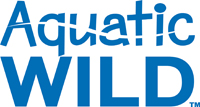I. PROJECT WILD ACTIVITY RESOURCES
Click on a logo below for resources that are specific to Project WILD activities, including resources referred to from these activity components: In Step with STEM , WILD Work, Student Pages, and Additional Activity Resources
II. PROJECT WILD ONLINE EDUCATOR PROFESSIONAL DEVELOPMENT: COURSES AND COURSE RESOURCES
Follow this link for information on signing up for WILD Online Professional Development courses, as well as accessing additional learning and teaching resources connected to Project WILD Online activities.
III. PROJECT WILD PROGRAM RESOURCES
The links within the topics described below generally apply to all Project WILD curricula.
SCHOOLYARD HABITAT
WILD School Sites Guide
animals in the classroom
- Alternatives to Raising and Releasing Wildlife for Education
- See also . . .
1. "Animals in the Classroom" in the Appendix of Aquatic WILD K-12 Curriculum and Activity Guide and Project WILD K-12 Curriculum and Activity Guide
2. "Benefits of Using a Classroom Aquarium" in Project WILD K-12 Curriculum and Activity Guide
Art & Illustration
Webinar Series: Drawing on Nature: Developing Students' Skills in Observation, Illustration, Data Collection and Nature Journaling
- Part 1: For Elementary Level Educators (webinar recording)
- Part 2: For Middle & High School Level Educators (webinar recording)
- Drawing on Nature Slide Deck (4 MB PDF download-- includes slides for Part 1 & Part 2)
Bow Seat Ocean Awareness Programs - the world's largest environmental youth program for the creative arts
CONCEPTUAL FRAMEWORK
The Project WILD Conceptual Framework serves as the conceptual basis for activities in the Project WILD and Aquatic WILD K–12 Curriculum and Activity Guides. It is referenced by specific concept codes in each activity in the guides. The framework is divided by the topics Ecological Knowledge, Social and Political Knowledge, and Sustaining Fish and Wildlife Resources.
CORRELATIONS
Correlations to Next Generation Science Standards (NGSS)
The documents linked below identify how Project WILD materials and training address NGSS in the respective activity guides as well as the smaller activity modules and their accompanying online courses.
Curriculum & Activity Guides and NGSS:
- Project WILD (Fourth Edition) Correlations to NGSS Three Dimensions: DCI's, SEP's, and CCC's
- Project WILD Correlations to NGSS PEs (third edition correlations)
- Aquatic WILD (Fourth Edition) Correlations to NGSS PEs
- Growing Up WILD: Exploring Nature with Young Children--Correlations to NGSS PEs
Activity Modules and Online Professional Development Course Correlations to NGSS:
- Aquatic WILD Online (correlations to activities used in the online course that also are found in the Aquatic WILD activity guide)
- Climate & Wildlife Online (correlations to activities printed in the module and covered in the online course)
- Flying WILD Online (correlations to activities printed in the module and covered in the online course)
- Project WILD Online (correlations to activities used in the online course that also are found in the Project WILD activity guide)
Correlations to Head Start Early Learning Outcomes Framework
Correlations to Sense of Smell and Growing Up WILD Activities
Correlations to NAEYC Early Learning Program Accreditation Standards and Assessment Items
Correlations to AFWA's K-12 Conservation Education Scope and Sequence
Correlations to Common Core State Standards (CCSS): English / Language Arts (ELA)
Correlations to Common Core State Standards (CCSS): Mathematics
Correlations to Scout Badges
- Girl Scouts and Project WILD: A Supplemental Guide to Connecting Skill-Building Badges and WILD Activities
- Using Growing Up WILD to introduce Daisy and Brownie Girl Scouts to the Outdoors
- Cub Scout Trail Requirements Correlation to Project WILD, Aquatic WILD, and Growing Up WILD activities (May 2022)
Art and Music
Citizen Science
Consumptive Use & R3
Physical Education
State Correlations
- Project WILD and Aquatic WILD Correlations to the 2018 Virginia Standards of Learning for Science
- Virginia Science Standards of Learning K-6 Themes and Project WILD
English-languare learners (ELL), English as a Second Language (ESL), & Sheltered instruction
- Sheltered Instruction Using Project WILD and Project Learning Tree: Providing access to Environmental Education for Second Language Learners of English
- Video: Sheltered English Instruction Tips & Tricks



